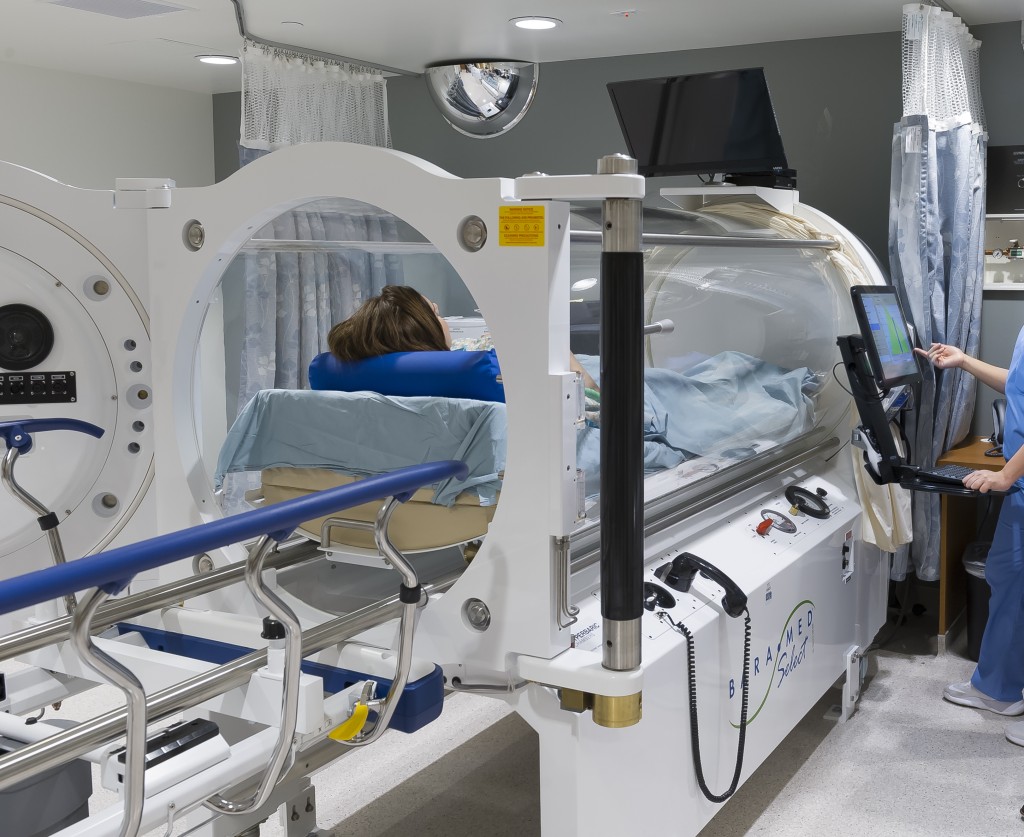Center for Wound Healing & Hyperbarics Touts Benefits of Hyperbaric Oxygen Therapy for Cancer Patients with Radiation Damage
January 7, 2022

Last year, half of the nearly 2 million people diagnosed with cancer in the U.S. underwent radiation therapy to destroy malignant cells. Thanks to new developments in radiation oncology, many patients end treatment and start a new life chapter. However, even though radiotherapy is very good at killing cancer cells, it can also impact nearby healthy cells. Some patients experience delayed radiation injury – painful and occasionally life threatening side effects that present themselves months or even years later.
Approximately 30,000 of the 2 million U.S. cancer patients treated with radiotherapy last year will eventually report symptoms including significant pain, infection, bleeding, and physical discomfort. Radiation damage can occur just about anywhere on or within the body including the head and neck, chest wall, abdomen or pelvis. For example, patients who receive pelvic radiotherapy for urological cancers may experience significant abdominal pain, urinary frequency or urgency, and blood in the urine. Patients with head or neck cancer can suffer from osteoradionecrosis, a condition in which bone tissue weakens and deteriorates. It is an unusual but serious complication that can result in death of the bone and surrounding tissues and can lead to bone exposure through the skin. Again, these symptoms can appear years after treatment.
The likelihood of radiation damage depends on several factors including a patient’s sensitivity to radiotherapy, the type and dose of treatment, and the location of the cancer. Scarring, infection, and a lack of blood supply to treated areas can result in damage or death of surrounding tissues.
Radiation injury can greatly impact a patient’s quality of life; therefore finding symptomatic relief is worthy of investigation. For some patients, hyperbaric oxygen therapy can eradicate long-term damage, allowing them to get back to their lives and/or successfully undergo additional reconstructive procedures such as breast or facial surgeries. With limited treatment options for radiation damage, hyperbaric oxygen therapy is a viable non-invasive treatment to consider.
Hyperbaric Oxygen Therapy: Providing Symptom Relief for Patients with Radiation Injury
First used in the U.S. in the early 20th century, hyperbaric oxygen therapy (HBOT) has emerged as a very effective treatment for patients suffering from the late effects of radiotherapy. HBOT can revitalize damaged tissues by bringing nutrients and oxygen to the areas that need it most through the growth of new blood vessels and increased circulation. This stimulates the healing process and can greatly improve the patient’s quality of life.
During treatment, the patient is given 100 percent oxygen in a pressurized hyperbaric chamber. The increased oxygen greatly enhances the ability of white blood cells to kill bacteria and reduce inflammation while allowing new blood vessels to form in affected areas. In other words, it speeds and promotes healing.
“Hyperbaric oxygen therapy is very helpful for patients suffering from radiation injury because exposing the body to high levels of oxygen under pressure increases blood flow and vascularization to the area, which promotes healing,” said Catherine Phipps, PA at the Center for Wound Healing & Hyperbarics at Southwestern Medical Center. “Increasing oxygen concentrations in the blood can be a tremendous help for people with radiation damage or chronic wounds. It offers a huge potential benefit with low risk.”
How Do You Know if HBOT Treatment Might Help?
If you are a cancer survivor experiencing considerable pain or discomfort months or even years after radiation therapy, consult your physician. If HBOT is indicated, treatment should begin as soon as possible. Most insurance companies will cover HBOT with proper documentation. It should be noted HBOT is a serious commitment of time and effort on the part of the patient, requiring daily appointments, sometimes for several weeks, for 10-60 treatment sessions. It’s important to note HBOT is mostly reserved for outpatient treatment. If you have any questions, contact the Center for Wound Healing & Hyperbarics at 580-531-6441 for more information.
